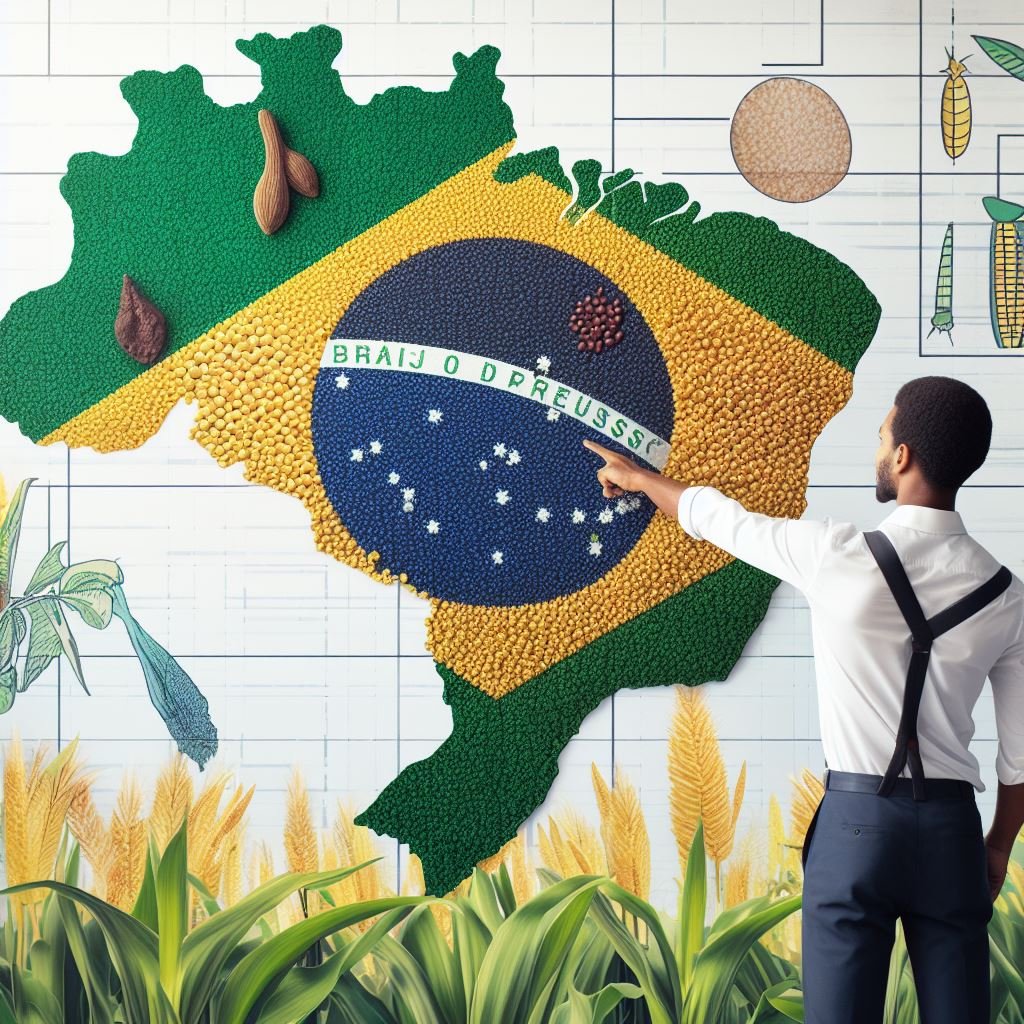Brazil Crop Production: when and where Brazil plants crops
Even for industry veterans, it is not well understood where and when Brazil plants each crop. Here is a primer for the season ahead.
Brazil’s planting windows are much more important than the USA because they often double (or even triple crop). But this is dependent on receiving rain in the correct periods. Farmers may switch crops or shift to shorter-season varieties if rains do not arrive.
The losses can come from not planting a second crop, using less-than-ideal seeds, and reducing input costs. Production losses can compound in extreme scenarios because a farmer in Mato Grosso will replant, shift to a shorter season, reduce chemical inputs, and risk not planting Safrina corn.
Brazil’s north and center-west usually receive A LOT of rain. Even 60% of normal is more than enough. This year is starting extremely dry in the major producing regions. Traders will focus on soybeans because of Brazil’s role as the world’s largest producer and exporter. Still, Brazil grows many other crops in the regions that are currently experiencing extreme heat and drought.
Cotton
92% of cotton is grown between Mato Grosso and Bahia. These two areas are of significant concern. Cotton will handle the heat better than other crops but will need rain in December and January.
Corn
Corn in Brazil is the most complicated. 27% of corn is the first crop (Safra), and 73% is the second crop (Safrina). Planting delays are a big risk for Safra corn in the south and Safrina corn in the center and center-west of the country.
The geographic breakdown is Safra corn, which is primarily grown in the east and south (from Maranhao to Rio Grande do Sul). In contrast, most Safrina is produced in the center and center-west (Mato Grosso, Mato Grosso do Sul, and Goias).
In general, one-third of corn is grown in areas with plenty of precipitation, except for Rio Grande do Sul’s excessive rains will prevent planting some first-season corn. Today's primary risk is replanting soybeans or delayed planting, limiting Safrina's potential. In an extreme scenario, losses could be expected from yield drag on soybeans and large unplanted Safrina areas.
Rice
80% of the rice is grown in the southern states of Rio Grande do Sul and Santa Catarina, which are experiencing too much rain.
Sunflower
90% is grown in Mato Grosso, Goias, and Minas Gerais. All are hot and dry, but sunflowers can deal with extreme heat better than other crops due to their long roots.
Sorghum
80% of sorghum is grown in Goais, Minas Gerais, Sao Paulo, and Bahia. All are too hot and dry today.
Soybeans
Two-thirds of soybeans are produced in the center, center-west, and north of the country. Mato Grosso can reach 45 million metric tonnes alone (26%). Mato Gross do Sul, Minas Gerais, and Goiás will be critical areas to monitor as rains move north in the weeks ahead.
Just over two-thirds of Brazil’s soybean production is in states that are at risk. This equals 114 million tonnes based on Easy Newz's October 1 projections, or 3 million more than the entire United States' production.
Wheat
It is a non-event for this period, but extreme rains in the south hurt quality and production. 80% is grown from Paraná to Rio Grande do Sul.
Sugar and Coffee
This weather is an extreme risk for both soft crops. 90% of sugar is grown in Sao Paulo, Minas Gerais, and Goias. 90% of the coffee is grown in the east, including Bahia, Sao Paulo, Espirito Santo, and Minas Gerais.


